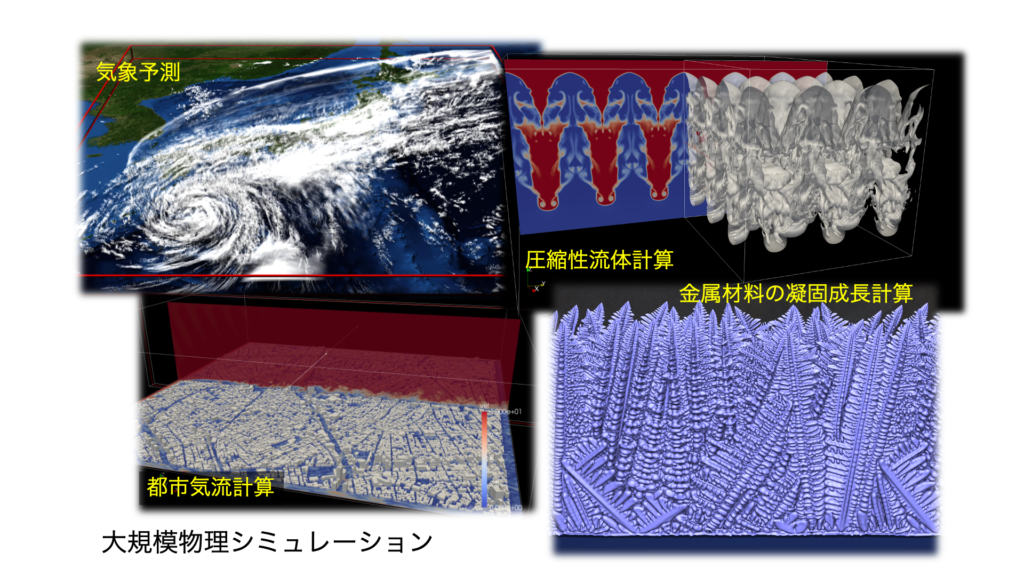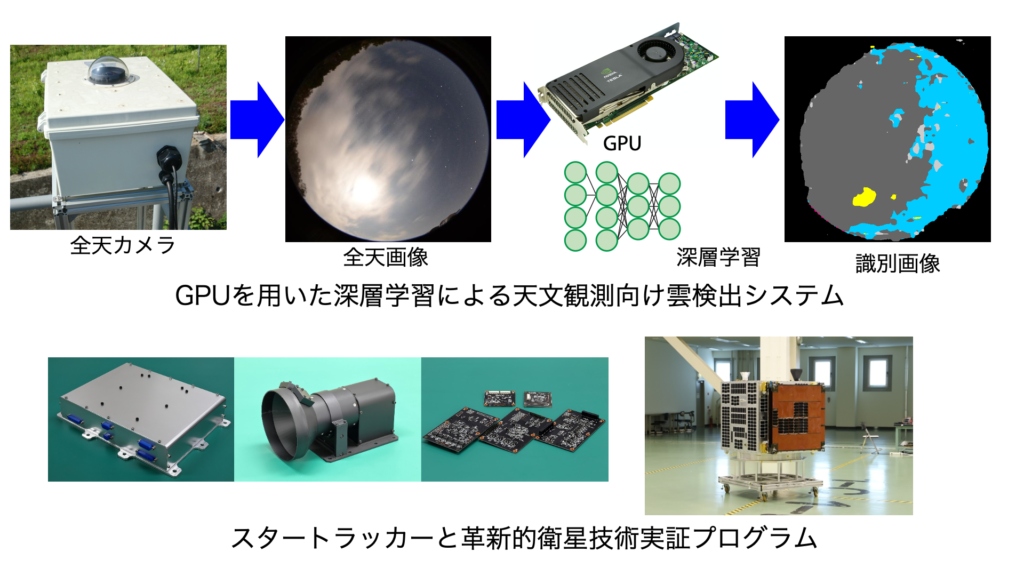
SHIMOKAWABE Takashi Associate Professor
Kashiwa Campus
Graduate SchoolGraduate School of Engineering - Electrical Engineering and Information Systems
Departmentー
Media, Intelligence & Computation Field
Software
High-Performance Computing
Computational science
GPU computing
Computing
Deep Learning and Generative AI
Large-scale simulation on supercomputers
Physical simulations are used in various fields of computational science and computational engineering, such as meteorology, space, and manufacturing. Research and development of computational methods, algorithms, and software technologies are necessary to realize large-scale simulations using next-generation supercomputers. Our research interests include fluid computation, GPU computation, AMR, acceleration methods, machine learning, and dynamic load balancing.
Research field 1
Large-scale physics simulation using supercomputer

The latest supercomputers are equipped with more than thousands of GPUs (Graphics Processing Units) and other accelerators to achieve high performance with low power consumption. Such supercomputers are in operation in Japan, the United States, China, and other countries. GPUs were originally designed for image processing, but they are now being installed in the latest supercomputers on a large scale because of their higher computing performance per unit of power consumption compared to CPUs. Mesh-based computation is a typical application of supercomputers. Our group is working on high-performance computation of various mesh-based applications on GPU-equipped supercomputers, such as weather calculations, fluid dynamics, and solidification and growth calculations of metallic materials. In order to perform these applications efficiently on GPU supercomputers and supercomputers equipped with state-of-the-art processors, it is necessary to introduce complicated optimization methods. We are conducting research and development of these methods.
Research field 2
Adaptive mesh refinement and a high-productivity framework for high-resolution computation

Mesh-based simulations are increasingly demanding effective methods for problems where the required accuracy varies depending on the location of the vast computational domain. For GPU calculations, the adaptive mesh refinement (AMR) method is effective because it can locally refine regions where high accuracy is required using stencil calculations, which are relatively easy to obtain high performance on GPUs. Our group is constructing an AMR framework for multiple GPUs based on the stencil calculation framework we have developed previously. Using this framework, we are working on the development of high-resolution compressible fluid dynamics and simulation techniques for flows around objects.
Research field 3
Machine learning-based fast prediction of simulation results for fluid dynamics

Computational fluid dynamics is one of the important applications in the field of high-performance computing. To obtain high numerical accuracy, it is necessary to use fine time steps on a fine computational grid, and large-scale computations using supercomputers are indispensable. For this reason, various efforts are being made to accelerate computational fluid dynamics simulations. In recent years, deep learning has been actively studied in the field of image recognition. Deep learning is a machine learning technique that uses deep neural networks with multiple layers between input and output layers. Our group has been studying the use of deep learning to predict fast the results of computational fluid dynamics simulations. We are developing methods for predicting the results of large-scale steady-state flow simulations by combining the domain decomposition techniques with the inference of deep learning, and methods for predicting the results of subsequent fluid simulations from the computation history of multiple time steps.
Research field 4
GPU computation to astronomical observation data processing

As an application of low-power consumption and high-performance computation by GPUs, we are conducting interdisciplinary research on the use of GPUs in observational astronomy. Our group is cooperating in the development of high-speed processing techniques for telescope observation images using GPUs and in the development of detection methods for unidentified objects. As part of this research, we have also cooperated in the development of a star tracker that determines the viewing direction from the position of a celestial object on a small satellite. The developed star tracker was launched on January 18, 2019 on the small satellite RAPIS-1 (RAPid Innovative payload demonstration Satellite 1) of the Japan Aerospace Exploration Agency's (JAXA). We join the small satellite "PETREL" project led by the Tokyo Institute of Technology for the study of time-domain astronomy with the ultraviolet wide-field survey, and we will cooperate with the project on data distribution for academic fields.